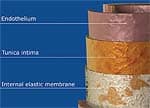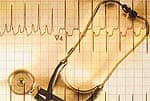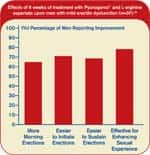Life Extension Magazine®
Aging individuals become very enthusiastic when they discover something that produces an immediate result. Life Extension® members often send us samples of dietary supplements they claim have enhanced their sexual performance. These members are elated that a purported “natural” product produces such striking erection-inducing benefits and want us to inform other members. When we try these products, we find most of them do indeed work! After we assay these products, we disappointingly find out why they are so effective. It turns out that unscrupulous supplement makers are spiking herbal preparations with prescription drug ingredients found in Viagra®, Levitra®, or Cialis®. What you need to know
So when we started getting calls about another “natural” male sex product, we were skeptical. We were impressed that five different clinical studies documented the efficacy of the nutrient combination, but we wondered, is this just another drug-spiked product pretending to be a dietary supplement? As expected, we observed the same remarkable benefits reported in the clinical studies. What amazed us, however, was that our assays did not detect any prescription drug residue in this supplement. Based on its underlying mechanisms of action—backed by solid scientific data—it would appear that this nutrient combination not only produces a rapid improvement in male sexual function, but may also confer significant benefit to the vascular system as well. Erectile dysfunction is often associated with coronary artery disease.1 A nutrient formula that improves male erectile capability may very well protect against heart attack and stroke as well. This article describes the science behind this drug-free male sex enhancer. Erectile Dysfunction Associated with Vascular DiseaseMainstream doctors generally resort to one of three FDA-approved prescription drugs (Viagra®, Cialis®, or Levitra®) to treat patients suffering from mild erectile dysfunction (ED)—with mixed results. As Mayo Clinic professor of urology Dr. Ajay Nehra recently told the New York Times, “the medications do not work for about half of the men with ED.”2 Although these drugs may help some men with ED to achieve temporary erections sufficient for sexual activity, they do nothing to treat chronic endothelial dysfunction, one of ED’s stealth causes. The unfortunate reality is that many aging men remain unaware of the link between ED and vascular disease. They go to their doctors seeking help for sexual dysfunction, get a prescription, and leave with no idea of the creeping health dangers that may lie in store for them. These dangers are real. “Erectile problems may show up about three years before a cardiovascular event such as a heart attack or stroke,” Dr. Ira Sharlip reported in the same New York Times article.2 Prescription drugs for ED can cost as much as $15 per pill.2 They are often accompanied by an array of side effects ranging from indigestion,3 flushing,4 blurred vision,5-7 hearing loss,8,9 congestion,10 and headache11 to more serious health problems, from neurologic disorders12 to heart attacks.3,13 These drugs provide short-term relief to ED sufferers by relaxing the smooth muscles that line the arteries, thus increasing blood flow into arteries that supply the penis. In those instances when ED is the result of plaque buildup in penile arteries, these drugs offer no long-term benefit. For men interested in achieving optimal health—including dynamic sexual health—a better option is now available. A Unique Strategy to Support Endothelial Health—and Restore PotencyResearchers have developed a unique natural strategy for management of erectile dysfunction that includes a blend of Pycnogenol® (French maritime pine bark extract) and L-arginine aspartate, an amino acid chelate; combined with icariin, a flavonoid compound used in Chinese herbal medicine.
The interaction of these three ingredients creates a unique strategy that promises to tackle erectile dysfunction from multiple angles. The nutrients’ underlying mechanisms of action are innovative yet elegantly simple. Here’s how it works: to get an erection, you need adequate blood flow. This requires the relaxation of the smooth muscle in the arteries of the penis. The chemical compound nitric oxide triggers this process of relaxation, increasing the blood flow to the penis required for an erection. Endothelial cells are responsible for nitric oxide production. They release nitric oxide synthase, an enzyme that catalyzes the production of nitric oxide from L-arginine. This process is essential to maintaining an erection. Dysfunctional endothelial cells, disabled by plaque buildup, can no longer produce enough of this enzyme.30 Pycnogenol® stimulates endothelial nitric oxide synthase to produce nitric oxide in the artery linings from the amino acid L-arginine, yielding sufficient bioactive nitric oxide to maintain an erection.31 At the same time, icariin acts to block the enzyme responsible for causing erections to subside, known as phosphodiesterase-5 (PDE5).32 Interestingly, these nutrients not only promote erections, but also enhance male fertility and endo-thelial health. In other words, numerous distinct modes of action work together to produce a broad array of clinically proven health benefits. Meanwhile, prescription erectile dysfunction drugs such as Viagra® support penile erection primarily by blocking the action of PDE5, without delivering any other benefit. Pycnogenol® and L-arginine Aspartate: A Clinically Proven, Long-Term Alternative to ED DrugsThe efficacy of Pycnogenol® and L-arginine aspartate has been tested in five independent clinical studies. All of these studies showed that male sexual function was restored during supplementation with these ingredients.33-37 Patients also reported an increase in sexual dreams and fantasies and more frequent morning erections. Their partners noted higher sexual interest and enhanced sexual performance.38 The first clinical trial to report successful treatment of erectile dysfunction with Pycnogenol® and L-arginine aspartate involved 40 men between 25 and 45 years of age suffering from mild ED. After treatment with arginyl aspartate (which provided the equivalent of 1.7 g L-arginine per day) for one month, only 2 patients (5% of all patients) experienced normal erections. During a second month of treatment, 80 mg Pycnogenol® per day was added to the arginine regimen and yielded a significant improvement, with 32 patients (80%) enjoying normal erections. A third month’s treatment with L-arginine, together with an increased amount of Pycnogenol® (120 mg per day), further increased the number of patients with restored normal erectile function. At the end of the trial, 37 patients, equivalent to 92.5% of all participants, achieved normal erectile function.35 A second clinical study examined 50 middle-aged men with low testosterone levels who suffered from ED as well as from poor fertility due to impaired sperm motility and morphology.36 Men were given 3 g L-arginine aspartate and 120 mg Pycnogenol® plus 120 mg testosterone undecanoate over a period of 11 months. A statistically significant 76% of men achieved normal sexual function and this effect was sustained during the entire treatment period. The researchers found that this treatment improved sperm quality and quantity at the end of the 1-year treatment and an astounding 40% (20 of 50 patients) achieved fertilization. A third study—this one a randomized, double-blind, placebo-controlled, crossover study—evaluated the effects of Pycnogenol® and L-arginine aspartate on spermatozoa parameters in 50 middle-aged men diagnosed with infertility.37 Investigators found improvement of sperm quality in all participants, with better results in younger men. Study results confirmed that this treatment improved sperm parameters in men with infertility. A fourth clinical study, which used a randomly allocated, double-blind, placebo-controlled, crossover design, examined 50 middle-aged men with mild to moderate erectile dysfunction who were treated for one month with placebo or with Pycnogenol® and L-arginine aspartate.33 Study participants recorded their sexual function/dysfunction in diaries. Investigators monitored testosterone levels and endothelial nitric oxide synthase levels along with routine clinical chemistry. Treatment with Pycnogenol® and L-arginine aspartate for one month restored erectile function to normal, and intercourse frequency doubled. Investigators found that endothelial nitric oxide synthase in spermatozoa and testosterone levels in blood increased significantly, while blood cholesterol levels and blood pressure were lowered. The fifth clinical study used a randomly allocated, double-blind, placebo-controlled, crossover design.34 It examined 50 infertile men who were treated for one month with placebo or Pycnogenol® and L-arginine aspartate. Investigators tested semen samples at four-week intervals and found that treatment with this formula significantly increased semen volume, concentration of spermatozoa, percentage of motile spermatozoa, and percentage of spermatozoa with normal morphology compared with placebo treatment. Intake of Pycnogenol® and L-arginine aspartate for one month restored the fertility index to normal values. After treatment, the fertility index decreased again to infertile status. No adverse events were reported. Researchers believe that improving the quality of spermatozoa from infertile status to a normal fertility index could be caused by two mechanisms: the first is that Pycnogenol® in combination with L-arginine aspartate inhibits the peroxidation of the lipid membrane of spermatozoa, thereby improving the morphology and motility of spermatozoa. The second action could be that these ingredients enhance sperm motility and function by stimulating the activity of endothelial nitric oxide synthase. Both mechanisms, perhaps acting simultaneously, have been shown to improve the quality of spermatozoa.
|
||||||
Icariin: Sustaining Erectile FunctionIcariin is a flavonoid compound extracted from plants in the Epimedium family, which are also known as Yin Yang Huo. Chinese medicine practitioners claim that these plants produce aphrodisiac effects and help restore erectile function. Researchers agree there is good evidence that icariin is the primary active component of Epimedium extracts. Like Viagra®, Cialis®, and Levitra®, icariin blocks the action of PDE5, the enzyme that causes erections to subside.32,39-41 Icariin enhances the production of nitric oxide in human endothelial cell culture and in animal models.42-44 Additionally, scientists have noted that icariin behaves similarly to testosterone—a significant feature, since testosterone is crucial for healthy sexual function.45 Animal research has shown that administration of Epimedium extracts improves erectile function in aged rats.46 Together, these multiple mechanisms of action suggest that icariin can help support healthy erectile function.
ConclusionErectile dysfunction not only compromises intimate relationships; it can also be a harbinger of serious and potentially deadly cardiovascular disease.
Scientists have found that certain nutrients not only restore erectile performance but also improve endothelial function caused by oxidative stress and diminished levels of nitric oxide. Studies and clinical trials have shown that these nutrients can potentially reduce the risk of cardiovascular disease and erectile dysfunction. In addition to their ability to correct erectile dysfunction, these nutrients have been shown to improve libido and boost sperm viability, quantity, and motility, all of which significantly increase male fertility. Drugs prescribed to treat ED have no positive effect on fertility. Individually and collectively, these nutrients promote systemic endothelial health and provide a consistent supply of compounds that can prevent and reverse erectile dysfunction. An estimated 330 million men worldwide will be facing vascular disease and erectile dysfunction in the near future. These clinically proven nutrients offer welcome benefits of vascular health and improved sexual function to millions of men and their partners. If you have any questions on the scientific content of this article, please call a Life Extension® Health Advisor at 1-866-864-3027. | |||||
| References | |||||
| 1. Int J Impot Res 2008 Dec;20 Suppl 2:S9-14. 2. Alderman L. For common male problem, hope beyond a pill. New York Times. August 29, 2009. 3. Harefuah. 1998 Jul;135(1-2):1-2. 4. Curr Med Res Opin. 2006 Nov;22(11):2111-20. 5. Drug Saf. 2009;32(1):1-18. 6. Drugs. 2007;67(1):75-93. 7. Can J Urol. 2006 Oct;13(5):3233-8. 8. J Laryngol Otol. 2007 Apr;121(4):395-7. 9. Biol Pharm Bull. 2008 Oct;31(10):1981-4. 10. Int J Impot Res. 2003 Apr;15(2):80-6. 11. Brain. 2003 Jan;126(Pt 1):241-7. 12. Clin Neuropharmacol. 2008 Nov;31(6):353-62. 13. Ann Pharmacother. 2005 Jul;39(7-8):1362-4. 14. Vasa. 1997 Aug;26(3):180-4. 15. Verh K Acad Geneeskd Belg. 1998;60(3):251-66. 16. World J Urol. 2002 May;20(1):28-35. 17. J Sex Res. 2002 Feb;39(1):73-8. 18. J Urol. 1994 Jan;151(1):54-61. 19. J Clin Epidemiol. 2000 Jan;53(1):71-8. 20. J Vasc Res. 2002 Jul;39(4):283-303. 21. PR Health Sci J. 1997 Jun;16(2):136-41. 22. Free Radic Biol Med. 2000 Jun 15;28(12):1806-14. 23. Diabetologia. 2002 Dec;45(12):1609-16. 24. Circulation. 1998 Nov 3;98(18):1842-7. 25. Thromb Haemost. 2006 Jan;95(1):134-41. 26. Curr Opin Urol. 2006 Jan;16(1):11-9. 27. Diabetes. 2006 Feb;55(2):530-7. 28. Clin Cardiol. 1998 May;21(5):331-4. 29. Med Sci Monit. 2001 Sep;7(5):1075-85. 30. Trends Endocrinol Metab. 2009 Aug;20(6):295-302. 31. Rohdewald P. Pycnogenol, French maritime pine bark extract. In: Coates P, ed. Encyclopedia of Dietary Supplements. New York; Marcel Dekker; 2004. 32. Urology. 2006 Dec;68(6):1350-4. 33. Int J Impot Res. 2008 Mar;20(2):173-80. 34. Phytother Res. 2009 Mar;23(3):297-302. 35. J Sex Marital Ther. 2003 May;29(3):207-13. 36. European Bulletin of Drug Research. 2005;13(1): 7–13. 37. Akush Ginekol (Sofiia). 2007;46(5):7-12. 38. European Bulletin of Drug Research. 2003;11:29-37. 39. J Huazhong Univ Sci Technolog Med Sci. 2006;26(4):460-2. 40. Asian J Androl. 2003 Mar;5(1):15-8. 41. J Nat Prod. 2008 Sep;71(9):1513-7. 42. Vascul Pharmacol. 2007 Jul;47(1):18-24. 43. Zhonghua Yi Xue Za Zhi. 2004 Jun 2;84(11):954-7. 44. Asian J Androl. 2005 Dec;7(4):381-8. 45. Asian J Androl. 2006 Sep;8(5):601-5. 46. J Ethnopharmacol. 2007 Dec 3;114(3):412-6. 47. N Engl J Med. 1992 Jan 9;326(2):90-4. 48. Curr Drug Targets Cardiovasc Haematol Disord. 2005 Feb;5(1):65-74. 49. Pharmacol Ther. 2005 May;106(2):233-66. 50. Science. 1991 Dec 6;254(5037):1503-6. 51. Annu Rev Neurosci. 1994;17:153-83. 52. Prog Brain Res. 1998;118:155-72. 53. Prog Neurobiol. 2001 May;64(1):51-68. 54. Orv Hetil. 1996 Aug 4;137(31):1699-704. 55. J Leukoc Biol. 1993 Aug;54(2):171-8. 56. Mol Med. 2002 Apr;8(4):169-78. |






